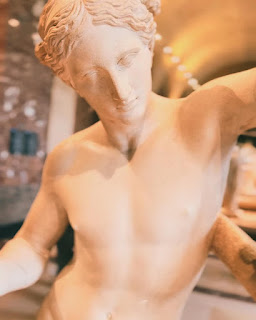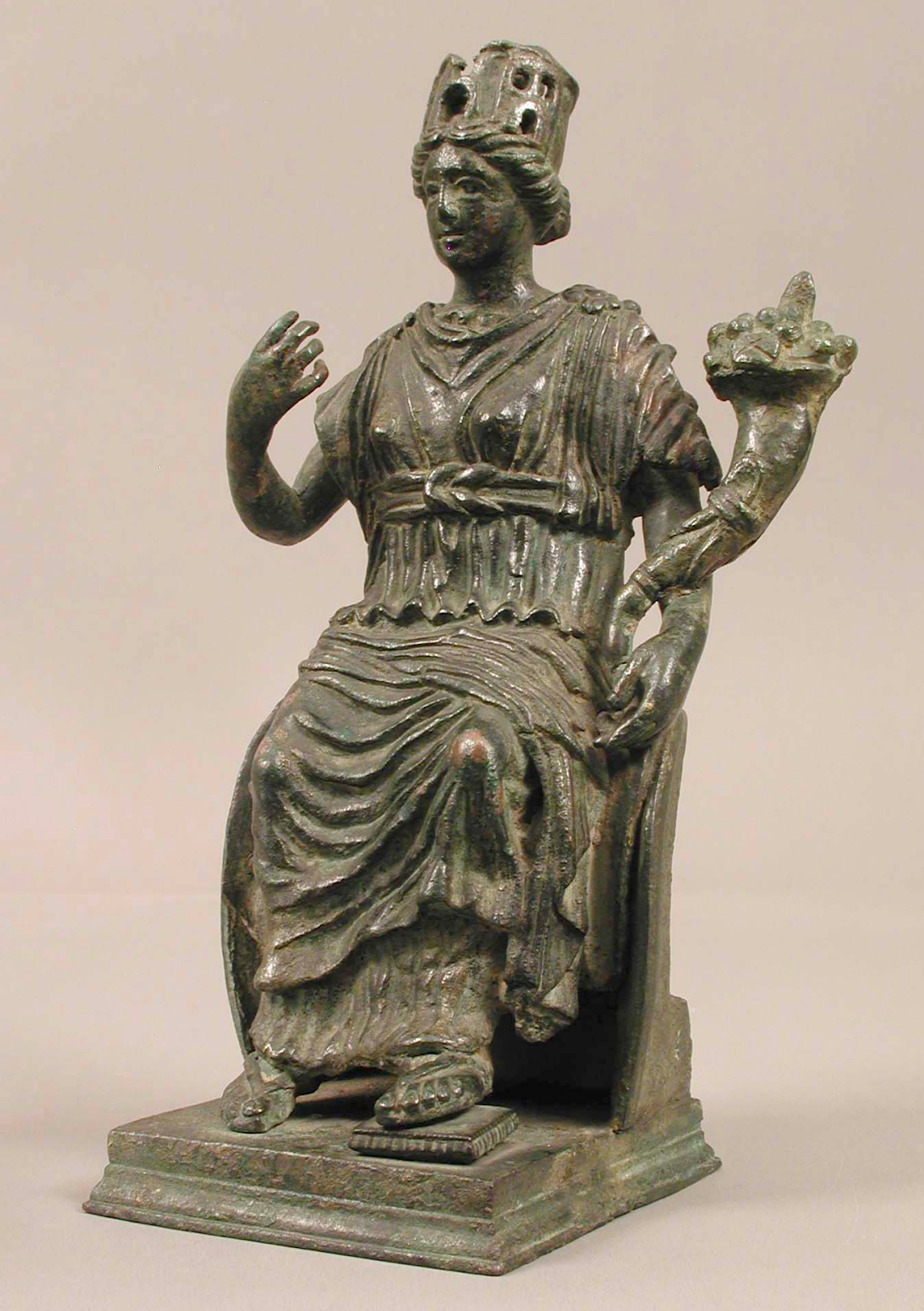Long story short, I visited the ancient Roman ruins of Ostia Antica, once Rome's port city. Today, Ostia Antica is a meticulously preserved archaeological site—a day trip journey from Rome.
 |
| The author sits astride the entrance to an ancient Roman snack shop on what was once a busy commercial street in Ostia, Antica. |
I remember the day we set out—my friend, a clinical social worker, and I,
a Benedictine monk! What a pair! The day was hot—one of those excessively hot summer days, which is why, historically, Popes have left Rome in the summer months to retreat at Castel Gandolfo, slightly more elevated and on a beautiful lake. Anyway, I digress. We took one of those local Italian trains that stopped at every village and township between Termini station and the coast.
I don't remember much about visiting Ostia except to say I appreciated how the ancient Romans had snack shops, indoor plumbing, heating, like us, storefronts, and well-laid out streets—a presage to pretty much how we live today—except trade horse carriages with gas-powered automobiles.
Takeaway: Ostia Antica is a day trip by train if you are traveling to
Rome, Italy.




![Un fleuve Barye, Antoine Louis. Un fleuve. 19th century, France. Musée du Louvre, Department of Sculptures of the Middle Ages, Renaissance, and Modern Times, inventory number RF 1560 & RF 1561. Louvre Museum, Sully, [HIST LOUVRE] Salle 134 - Salle de la maquette, Vitrine 08](https://blogger.googleusercontent.com/img/b/R29vZ2xl/AVvXsEhRE9YnlXlK6KfP-A0z_dJZYnBT7_1M5T9D3tZk_gXozKs9gMd9nO9UXlkT5TkHi9T0KkSBwjL6qcfr74jTaMOtO6h47D1jJt4P6LadIo9MGzu3yL8o9KabJ2TLnGC05aMOJLGXy08A5kn4PeMuqb1xi3BchLe5z6tW_ddtYaAY0Te_gBcwPo7btQ/w180-h320/A65BC7E3-435F-4BF6-9AEE-992B60DCA921.jpg)
![Statue of a Sphinx Musée du Louvre. Statue of a Sphinx. Circa 380-362 B.C. [?], Serapeum of Memphis, Saqqara. Musée du Louvre, Department of Egyptian Antiquities, Room 327, Sully, inventory number N 391 D. Louvre Museum](https://blogger.googleusercontent.com/img/b/R29vZ2xl/AVvXsEjgUwtk13qrP7vP1aawA_H8HLkuH_Om2fdXDUYZS5rp9gzDUj93w2JqthNzZp3HNWS8AsQqXaXeJC5UwcvtUI0RDp8NLgjTSiUTlm3d7iOqPGBZHf7o5BGbsuMqcyb0dXuT7bz1agggYfGBhFF45As03mepTGdzalqV6E6H9gy3r1oIJpCqEAcp_A/w256-h320/2B604D01-4603-465D-9A7E-BE621258F15E.jpg)
![Statue Musée du Louvre. Statue. Third Intermediate Period, circa 1069-664 B.C. [?]. Musée du Louvre, Department of Egyptian Antiquities, inventory numbers E 2410; N 1579; Clot bey C 25 no. 5. Louvre Museum](https://blogger.googleusercontent.com/img/b/R29vZ2xl/AVvXsEjgbctrJI65LJI1iyrVOfQhyphenhyphene1Tc7QGTT4wcBmC08D_-9ItrigFHgGkqlDv2rPXfIA1CmP6V8ZIqsfUQ7CGr0K2fEwD4wjU7gBYdxKLbgTQEFFjb50Ge3hY9aGWehNd6EDdhxp35uN-0HYHIBL-vXWIXJD-NcecFiFCi6zVnQWKKJnMVmExZpZKfQ/w256-h320/75DFE6FB-8092-4AAD-8E84-5475A684CEDD.jpg)
![Jupiter Musée du Louvre. Jupiter. 2nd century A.D. [?], Italy. Musée du Louvre, Department of Greek, Etruscan, and Roman Antiquities, Room 344.](https://blogger.googleusercontent.com/img/b/R29vZ2xl/AVvXsEh9FIeOZBWXHqm5AryH2Cb0EdwkG_C2QX7rHPa3IQTeF_q7JBsmrEfeSbekVmJaSLsg_k0Zb9dCdUctsB_i8rQA2dVqXkSQoBwP9IxfPLOA-5B4ufz0bVSvIVbKjqkpQeJ2U2Gl6C53r3ylcqsay29L5YfAPJNU4zaHvj3boIWM6pv3BF-rpLhZqA/w256-h320/72D6CC7E-0683-4B1E-AA7E-FA3A9611BA85.jpg)



